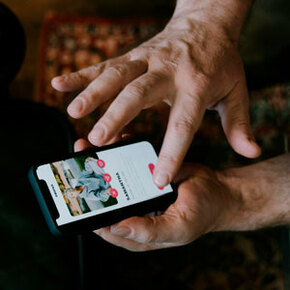
25 Of The Most Surprising Psychology Experiment Findings
Diving into the subtle nuances that drive the human mind based on results from psychological studies encourages us to look beyond the obvious. These experiments were designed to help grow our understanding of the world, and yielded bizarre results. They give us some insight about how novel concepts gradually take hold of the world after a discovery. They also provide perspective on all the strides we have made in science and the constructs of our society. If you’re enthusiastic about learning about the human brain, this fascinating Reddit thread may provide the answers you’re looking for. Scroll below to read all the thought-provoking possibilities unlocked by some of the most interesting psychological studies up to date.
#1

Image source: anon, Andrea Piacquadio
Dunning-Kruger effect is one of my favourites. Basically, people with less expertise in a field will over-estimate their abilities in the given field because they don’t know enough to see the limits of their expertise. At the same time, experts tend to under-estimate their abilities because they know too well what they don’t know.
The phenomenon has – among other factors – been linked to anti vaxxers, who over-estimate their expertise, not seeing what they don’t know, with dire consequences.
#2

Image source: palebluedot1988, Marcus Aurelius
Hedonic Adaptation. Put simply, a person who had just won the lottery and another person who had just been paralysed took a survey to measure their life contentment. Obviously it was high and low, respectively. However, they both took the same survey a year later and both scored similarly.
The point being that regardless what happens to you in life, good or bad, you will always adapt and spend most of your life feeling “neutral.”
#3
The Monopoly Study by Paul Piff. He basically brought two strangers into the lab together and had them play a game of Monopoly together. He randomly assigned one participant to start the game with twice as much money than the other and that participant also got to roll both dice to get around the board (i.e., the other participant started with half the money and could only roll one dice).
At the end of the game when he asked the participants who started with more money why he won the game, they would chock it up to their excellent strategy and gamesmanship rather than the fact that they had started the game with way more resources. It says a lot about how we deal with being born into a privileged state.
Image source: respectfullydissent
#4

There have been some experiments conducted, but the negativity effect/negativity bias is really sad to me:
It basically says that negative things have a greater emotional and psychological toll on our health than positive/neutral things. So you got an A on a test, that’s great. But you totally fail a test, and the world crumbles and it’s a total disaster. A hundred things can go right and work perfectly throughout the day, but it goes totally undetected in our minds. Then someone cuts us off in traffic and we fume and rage. I learned about this theory almost three years ago and think about it all the time. Reminds me to appreciate and notice the many little things in my day that do go right.
#5
**The Motivation Problem ~ A Lesson in Cause & Effect on Israeli Fighter Pilots**
In the 1960s, Nobel award winning psychologist Daniel Kahneman gave a lecture to a team of Israeli Air Force flight instructors about the value of positive reinforcement. Having proposed the idea that positive reinforcement almost always produced better results, the instructors scoffed at the idea. Their experience was completely the opposite confirmed by years of experience.
The instructors had tried being positive and it didn’t work. When they used positive reinforcement the results actually got worse. After bad performances, when they used threats and normal military reprimands, the instructors found the pilots almost always improved the next day. Thus Kahneman’s suggestion was the opposite of everything these instructors had experienced.
**Illusions of Causality**
You may be asking, who could even argue with such seemingly conclusive results? Yet Kahneman could, because he was right.
He showed that the actions of the instructors were not the cause of the expected results, and in fact, these actions weren’t the cause of anything. What the instructors were reporting was merely a case of regression toward the mean.
The fighter pilots were the very top in their fields, extremely dedicated and motivated, yet they were human like any of us so they were prone to good and bad days. On average, they performed very well. When one would have a bad day that would be below his norm, mere probability suggests that his next day is likely to be better. Conversely, when one performed well above his norm, the regression worked in the opposite direction as the probability would show that he would be expected to perform worse the next day.
The fact that the instructors yelled in their faces or praised their efforts had little to do with their next performance. The pilots simply had good and bad days from time to time. But positive feedback created considerably less stress than negative feedback, which was a powerful asset in an already stressful environment.
The beliefs of the instructors were completely fueled by a false assumption about cause and effect. We all want to assume we know the meaning of things, especially when it seems obvious. Yet often in life there is more depth than we notice.
As famed English writer Aldous Huxley observed…
*”Man is so intelligent that he feels impelled to invent theories to account for what happens in the world. Unfortunately, he is not quite intelligent enough, in most cases, to find correct explanations.”*
____________________________________________________
SOURCE: Kahneman, D., & Tversky, A. (1973). On the Psychology of Prediction. Psychological Review, Vol. 80(No. 4). American Psychological Association, Inc.
Image source: The-TW
#6

Mice were put on two sides of a wall with a door in. Only the right mouse could open the door. Slowly, they filled the left mouse’s room with water and eventually when right mouse saw them in danger, they opened the door.
However, mice that had previously been on he left side and were now on the right (mice who had previously been “wetted”) opened the door considerably faster because they knew how unpleasant it was to be in the other scenario. Basically mice have empathy.
#7

Image source: IGotSatan, research
The influence of the colour red in sports: Judges were shown a video of a Tae Kwon Do match and awarded more points to the red competitor (versus the blue competitor). When the colours were digitally reversed, judges awarded more points to the other, now red, competitor.
Red may be a signal of dominance as reddened skin is associated with higher testosterone (or possibly higher fertility in women). Wearing red may induce intrinsic psychological effects which increase dominance in addition to altering the perception of others. Researchers found that putting red leg bands on birds increased dominant behaviour, as they took the “lion’s share” of the food.
For my psychology degree dissertation, I presented photos of men to be rated on a scale of Friendly (0) to Threatening (10). Men received a higher threat score if I photoshopped their t-shirt to be red.
#8

Image source: melon_cubes, John Middelkoop
Hurricanes with female names are deadlier than those with male names. A paper published in PNAS by Jung et al. (2014) used six decades of death rates from US hurricanes and lab experiments and found that feminine-named hurricanes cause significantly more deaths than do masculine-named hurricanes. This is because hurricane names lead to gender-based expectations about intensity and severity which in turn guides people’s intentions to take protective action. A stunning finding on the effects of gender stereotypes.
#9

Image source: Extrasherman, sue george
One time I participated in a paid research experiment. I was basically tricked into thinking I was drunk.
I was placed in a room with 2 other people and we were instructed to drink vodka with cranberry juice over a period of time while we socialized. After we drank I was placed in a room where I had to read some flashing words on a computer. I felt pretty drunk at this point. When the researcher came back into the room he gave me my car keys and said I was never actually given alcohol. He briefly told me that because I was anticipating drinking for this experiment that my brain had tricked me into feeling the effects of being intoxicated. I immediately snapped out of it and was completely amazed at how I felt.
#10

Image source: mitzimitzi, Sergio López
If you stare into a dimly lit (i.e. candle-lit) mirror for 10+ minutes you start to see hallucinations. What individuals see tends to vary, but they’ve used this as a test to simulate schizophrenia before because some see monsters / deformities / general weird stuff.
I did a variation of it for a mate at uni and completely wimped out of it. After my face started not looking like my face anymore (I had a complete dissociation) I stopped looking and just waited out the time.
#11

Image source: wizzb, Liliana Drew
The Elevator Groupthink study, very amusing and sad at the same time. The experiment involved several actors entering an elevator with an oblivious participant. They then begin to perform a series of odd behaviours, such as they all stood facing the rear of the elevator. Inevitably, everyone else who got on ended up also facing the rear so as not to stand out from the rest. The study demonstrates how easily people succumb to group pressure to behave in a certain way.
#12
It’s not that psychopaths lack empathy, but rather, they have the manual settings. A specific region of the brain lights up when people experience empathy. For most people it’s an automatic, subconscious, response. But in a study where they showed emotional videos to psychopaths and non while scanning their brains, psychopaths would only light that region of the brain when specifically asked to feel for the character, while the control participants would light up automatically.
Image source: poopyinthepants
#13
Research into where morality comes from. They asked people taboo questions like-
“A brother and sister are alone in a cabin in the woods one night. They are both over 18 and decide to make love once, as they think it will strengthen their relationship. The sister is on birth control and the brother wears a c****m just to be safe. Is this act wrong?”
Or another question was
“A woman is cleaning her house and has no rags, so she finds an old American flag, tears it up and uses it to clean her house. Is this act wrong?”
They created stories like this to give an initial reaction of disgust. They would then ask the participants to explain their answers, most people couldn’t give a good answer, only saying “it feels wrong”
They then went further and and the interviewer would try their best to change the participants mind, saying things like “well, no-one saw, no-one got hurt” etc, but participants wouldn’t change their original response.
The conclusion was that people make intuitive (emotional) split second desicions all the time, and the reasoning (logical) portion of the brain tries it’s best to explain the decision, but cannot change the initial desicion.
See “The Rightous Mind” by Johnathan Haidt.
Image source: rumorhasit_
#14
I just recently heard of blind-sightedness during one of my cognitive psychology classes. Basically the area of the brain that processes what our eyes see is located at the back of the head, just where your skull starts to get smaller, towards your neck. Because of this, if you hit your head back there quite often everything will go black for a moment before sight returns again. Sometimes though, following severe trauma to this area of the brain (like after falling off a ladder onto a curb or something) a person is never able to see again.
For a long time it was assumed that the eyes were somehow incapable of seeing following the trauma and that was why people were blind, however it’s been shown that it is just the processing of the images that is damaged-in other words your eyes are still working away, viewing images but your brain is unable to process the images so you can’t “see” them.
Some experiments looking into this have found that people with damage to this area can still navigate around things in front of them, without realising they are doing it. So if you told someone with this damage to walk down a corridor, and you placed obstacles in their way, they wouldn’t be able to see the obstacles but they could avoid bumping into them because their eyes are still able to view them and send signals to other areas of the brain to avoid knocking things. This is known as blind-sightedness.
Image source: LittleMissSaintfield
#15
The self-fulfilling prophecy studies are very important to social psychology and their findings have many real world applications.
Basically they brought together a group of kids and formed a class with a real teacher. They gave the kids a test for overall academic skill at the start of the course, but didn’t really use the scores. Instead they told the teachers that a few students, picked at random, were very brilliant and scores very highly. They then observed the class for a long period of time and noticed that the teachers gave the kids they thought were brilliant much more attention. At the end of the study the kids took the test again, and they found that the kids who were randomly named brilliant at the start actually scores higher than the rest of the class. The kids, again, at the start didn’t score any different from the rest of the class, but through the self fulfilling prophecy they became the best in their class.
This obviously has tons of application in the world and especially education.
Image source: ehbacon23
#16
Subjects were tested for introvert versus extrovert personality types. Prediction was that when placed in a sensory deprivation chamber the introverts would be able to handle it easily while the extroverts would not. Exactly the reverse was found. Introverts became agitated quickly and performed all manners of self-stimulation. Extroverts quickly went to sleep.
What the finding showed was that it’s introverts who are the sensation seekers, needing stimulation from the outside world. Extroverts create their own internal sensation and project that out to the world.
Image source: there_ARE_watches
#17
The monster experiment! Although it is horrible how they left the children with mental health issues at the end, this experiment gave very good insight to how to parent a child.
On this experiment, they took groups of orphaned children and separated them into 3 groups. One was the control, the second were told they has a lips and were doing bad, and the third was told that their speech was perfect.
As the experiment went on, group 2 began developing lisps after being berated constantly. They became shy and reserved. They were scared to speak because they didn’t want to get in trouble because of their poor speaking skills. Group 3, however, had the opposite happen. They talked better, they were more willing to improve. They were encouraged to keep speaking and told that their speech was amazing and perfect.
By the end of the experiment, they had one group with no change, one group with now mentally ill children with a speech impediment, and one group with great speaking skills.
It truly shows that encouraging children is the way to go and that verbal abuse can be just as, if not more, harmful as physical abuse.
Image source: Buniny
#18

Image source: swearingalldamnday, Johann
Research on learned helplessness is fascinating. Researchers would put dogs into shuttle boxes (long cage-like structures that the dog could move around in) and would shock the dog through the floor on one side of the box. The dog, at first, could easily escape the shock by moving to the other side of the box. Eventually, the researcher adds a wall so the dog can’t escape the shocks — it just sits there, being shocked without escape. Through this the dog learns helplessness over repeated trials and extended periods of time. Even when the wall is taken down, the dog won’t walk to the other side and avoid the shocks anymore. It has become so used to the pain that it doesn’t even try to escape when escape would be easy.
This research has been used to explain certain aspects of human behavior, especially related to repeated experiences of ab**e and poverty. It takes a long time to get somebody out of this mindset, and is possibly one of the reasons why people get “stuck” in terrible situations.
#19
In 1925, Anna Freud (daughter of Sigmund Freud) met a woman by the name of Dorothy Burlingham in Vienna. Dorothy was an heiress of the famous Tiffany family in America. She had recently divorced her husband, and moved to Vienna in hopes of getting help from Anna with her children. She believed the children were suffering from depression and other mental illnesses and Anna was a well respected psychologist at the time, specializing in childhood development. Anna agreed to help Dorothy, and proceeded to essentially use this family as a guinea pig for her theories for the next 30 years or so.
Anna Freud believed (as her father did) that many psychological problems stem from the irrational nature of all humans, primarily sexual desire. Her solution was to force conformity until it was habit, after which all the irrational behaviors would fall away. The experiment was a massive success. When the eldest son began to show homosexual tendencies, they simply convinced him to act heterosexual and he suddenly was. If any of the other children acted in a way that was socially frowned upon, they would be told to simply act differently, and they would change to be that way inside.
Over the next 20 or so years, the children grew up to have extensive educations, get great jobs, and even establish families just as “normal” people are supposed to do. Anna Freud’s work became very respected by psychologists the world over, and people began to adopt her practices as their own to treat patients. Even the US Government began to use Anna Freud’s work, both to refine marital law (this was the basis for the now-popular decision to award sole custody to the mother) and to treat soldiers coming back from war with massive success.
Or so they thought.
It wasn’t until another 10-20 years down the road that things started to unravel. People started really questioning things when the eldest son committed s*****e at the age of 55, in 1970. Another of the children committed s*****e in 1974, in Anna Freud’s home. Over time it was uncovered that the children were only perfect on the outside. Once they became adults, their lives were filled with substance and physical abuse, and other signs of severe depression.
The damage was done, however. Anna Freud’s work was already massively popular, and was the basis for many cultural shifts in our society through the 70s-90s. All those terrible parenting strategies you remember growing up having to deal with? Most of those are derived from work by Anna Freud. It’s really amazing how much one person can affect the rest of us.
Image source: Jehovacoin
#20

Image source: danbish96, Michael Burrows
Reconsolidation: when you retrieve a memory from your long term memory it is susceptible to being manipulated. This can lead to to memories being totally changed from the source. This is why eyewitness accounts cannot be fully seen as true. This knowledge is also being used to help people with PTSD by changing the negative memories they have of their particular trauma.
#21
Diet and behaviour in children. Tl;dr – Sugar and sweets don’t make kids hyper. I love this one because its so counter-intuitive and every parent loves to tell you how their kid definitely does.
Researchers took a bunch of parents and their kids, and split them into two groups – those who get healthy fruit, and those who get sugary sweets.
The kids were separated from their parents for a moment and given the fruit or the sweets.
A few minutes later the parents were brought back in, and either told the truth about what they’d been given, or lied to and told the opposite. The parents and kids were left by themselves with an assortment of toys, and the parents were asked to rate their kids behaviour.
What they found is that irrespective of what they were actually given to eat, parents who were told their kids had sugary sweets reported worse behaviour than those who were told they had fruit (again, irrespective of what they actually had)
/|Given Fruit|Given Sweets
:–|:–|:–
Told the kids had fruit|Kids Behaved|Kids Behaved
Told the kids had sweets|Kids Misbehaved|Kids Misbehaved
Not told what they’d had|Kids behaved|Kids behaved
The interesting thing is that when you actually looked at the kids behaviour they really were misbehaving. Generally being more inclined to screech, throw toys around or ignore instructions.
Turns out it’s actually the parents behaviour that determines how the kids act.
The same study has also been done with sugary drinks v.s. water. Same result.
Image source: PhonicUK
#22

Image source: anon, Alex Green
Aron and Dutton (1974) – Misattribution of arousal.
Men who had just walked across bridge (either steady or unsteady) were approached by a female psychology student, posing to do a project on the effects of exposure to scenic attractions on creative expression. The men had to complete a questionnaire and write a short dramatic story about a picture she provided and she gave them her phone number if they had more questions. Men who walked across the shaky bridge were more likely to call her up because they misattributed the arousal from the bridge to the woman.
TLDR: watch a horror movie on the first date.
#23

Image source: poopellar, Min An
I don’t know the name of it but apparently two people become closer if they survive through something together. Not even actual ‘surviving death’ scenarios but anything that has you on your toes and heart racing, like a roller coaster.
#24
The power of a Placebo: Michael of VSauce fame teamed up with a group of PhD candidates in the psychology department of McGill for his show MindField. They recruited three kids with different disorders: eczema with skin-picking disorder; ADHD; and chronic migraines after a concussion.
The kids were each told they were going to be the first to receive a new experimental treatment for their condition, which consisted of putting them into a fake, non-functional MRI machine. Before doing so, they told them that the machine had the power to help them heal their brain. Michael even got a bunch of famous Youtubers to make fake videos discussing the new technology to make the kids believe it. While they were in the machine, the researchers (dressed as doctors) asked the kids if they were feeling the effects of the machine, and that they believed it was working. They never lied to the kids, they just told them it would give them the power to heal themselves.
All three of the kids had markedly improved symptoms several weeks later. The girl with eczema pretty much entirely stopped picking her skin to the point that she felt comfortable wearing short sleeve shirts for the first time. The mother of the kid with ADHD reported that he was much more calm and not as hyperactive. The kid with chronic migraines went from having something like 5-10 debilitating migraines per day to absolute zero, as shown by the chart his mom kept to track them.
Image source: poopitydoopityboop
#25
Our psych class repeated an experiment where half the class held a pencil in between their teeth, and the other half balanced on their top lips. We then rated how funny we thought a comic strip was. Turns out using face muscles associated with smiling (pencil between teeth) made the comic strip subjectively funnier then those associated with frowning (pencil balanced on top lips). Choosing to smile or frown can change how you feel and perceive life.
Image source: anon

















Got wisdom to pour?
This was a fascinating read! The Monopoly study especially stood out, how quickly people attribute success to personal skill when given an advantage says a lot about human nature. Psychology never fails to surprise. https://maisons-travaux.com/